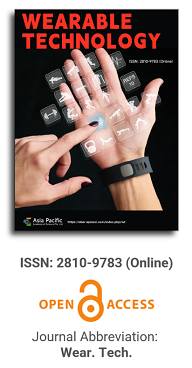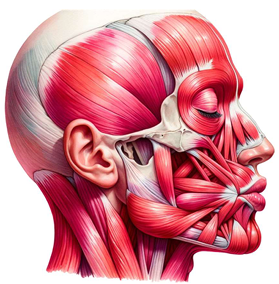

This paper delves deeply into the innovative realm of integrating human emotions with wearable technology. The primary focus is on the conceptualization and development of a kiss transfer device that harnesses the power of wearable technology to bridge the physical gap in human-human interactions. By investigating the intricate nuances of the human-human kissing process, the research seeks to replicate this intimate gesture through a technological medium. The paper not only elaborates on the anatomy, evolution, and hormonal dynamics of kissing but also underscores the transformative potential of wearable technology in capturing and transmitting these intimate moments. This exploration opens up new horizons for long-distance relationships, offering a tangible touchpoint that goes beyond traditional communication methods. Through this pioneering work, the research positions wearable technology as not just a tool for communication but as an extension of our human emotions and expressions.

Wearable technology in emotive communication: An in-depth exploration of the kiss transfer mechanism and its implications for human-human interactions
Vol 4, Issue 1, 2023
Download PDF
Abstract
This paper delves deeply into the innovative realm of integrating human emotions with wearable technology. The primary focus is on the conceptualization and development of a kiss transfer device that harnesses the power of wearable technology to bridge the physical gap in human-human interactions. By investigating the intricate nuances of the human-human kissing process, the research seeks to replicate this intimate gesture through a technological medium. The paper not only elaborates on the anatomy, evolution, and hormonal dynamics of kissing but also underscores the transformative potential of wearable technology in capturing and transmitting these intimate moments. This exploration opens up new horizons for long-distance relationships, offering a tangible touchpoint that goes beyond traditional communication methods. Through this pioneering work, the research positions wearable technology as not just a tool for communication but as an extension of our human emotions and expressions.
Keywords
References
- Cheok AD. Love and sex with robots. In: Hyperconnectivity. Springer London; 2016. pp. 41–63. doi: 10.1007/978-1-4471-7311-3_4
- Nguyen THD, Qui TCT, Xu K, et al. Real-time 3D human capture system for mixed-reality art and entertainment. IEEE Transactions on Visualization and Computer Graphics 2005; 11(6): 706–721. doi: 10.1109/TVCG.2005.105
- Brewster SA, Brown LM. Tactons: Structured tactile messages for non-visual information display. In: Proceedings of the Fifth Conference on Australasian User Interface; 18–22 January 2004; Dunedin, New Zealand. pp. 15–23. doi: 10.5555/976310.976313
- Haans A, IJsselsteijn W. Mediated social touch: A review of current research and future directions. Virtual Reality 2006; 9(2–3): 149–159. doi: 10.1007/s10055-005-0014-2
- Shedroff N. Experience Design 1. New Riders Publishing; 2001. 304p.
- Chang A, O’Modhrain S, Jacob R, et al. ComTouch: Design of a vibrotactile communication device. In: Proceedings of the 4th Conference on Designing Interactive Systems: Processes, Practices, Methods, and Techniques; 25–28 June 2002; London, England. pp. 312–320. doi: 10.1145/778712.778755
- Cheok AD, Goh KH, Liu W, et al. Human Pacman: A mobile, wide-area entertainment system based on physical, social, and ubiquitous computing. Personal and Ubiquitous Computing 2004; 8(2): 71–81. doi: 10.1007/s00779-004-0267-x
- Cheok AD, Zhang EY. Kissenger: Transmitting kiss through the Internet. In: Human–Robot Intimate Relationships. Springer; 2019. pp. 77–97. doi: 10.1007/978-3-319-94730-3_4
- Bowman DA, Kruijff E, LaViola JJ, Poupyrev I. 3D User Interfaces: Theory and Practice. Addison Wesley Longman Publishing; 2004. pp. 36–78.
- Slater M, Steed A, Chrysanthou Y. Computer Graphics and Virtual Environments: From Realism to Real-Time. Addison Wesley Longman Publishing; 2001. pp. 109–148.
- Joshi S, Harle SM. Linear variable differential transducer (LVDT) & its applications in civil engineering. International Journal of Transportation Engineering and Technology 2017; 3(4): 62–66. doi: 10.11648/j.ijtet.20170304.13
- Al-Sharif L, Kilani M, Taifour S, et al. Linear variable differential transformer design and verification using MATLAB and finite element analysis. In: Perutka K (editor). MATLAB for Engineers—Applications in Control, Electrical Engineering, IT and Robotics. IntechOpen; 2011. pp. 75–94. doi: 10.5772/19601
Supporting Agencies
Copyright (c) 2023 Emma Yann Zhang, Adrian David Cheok, Ying Yan, Jun Cai, Zhigeng Pan

This work is licensed under a Creative Commons Attribution 4.0 International License.

Prof. Zhen Cao
College of Information Science & Electronic Engineering, Zhejiang University
China, China
Processing Speed
-
-
-
- <5 days from submission to initial review decision;
- 62% acceptance rate
-
-
Asia Pacific Academy of Science Pte. Ltd. (APACSCI) specializes in international journal publishing. APACSCI adopts the open access publishing model and provides an important communication bridge for academic groups whose interest fields include engineering, technology, medicine, computer, mathematics, agriculture and forestry, and environment.





